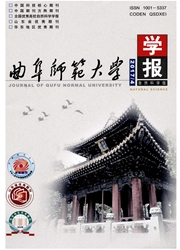

 中文摘要:
中文摘要:
通过构建基因组部分文库的方法在喜马拉雅旱獭4个地理种群中筛选出高变异微卫星位点,设计相应引物,检测位点SSR2、SSR4、SSR7在这4个地理种群中的遗传多态性,计算各种群间的遗传距离并进行聚类分析.结果表明:微卫星位点SSR2、SSR4、SSR7在4个地理种群中发现的等位基因数、有效等位基因数、Shannon指数、期望杂合度、多态信息含量波动范围分别为3-5,1.848-3.846,0.886-1.395,0.459-0.740,0.430-0.692,平均值分别为4.667、3.243、1.281、0.689、0.654.UPGMA聚类分析显示4个地理种群遗传进化关系明确,反映各种群之间的遗传相似性和遗传差异.结论:微卫星位点SSR2、SSR4、SSR7均为高度多态位点,适用于喜马拉雅旱獭遗传多态性研究;4个地理种群均显示出较高的遗传多态性,与喜马拉雅旱獭分布广泛、数量众多的事实相吻合.
 英文摘要:
英文摘要:
In this paper, part of the genomic library of Himalayan marmot (Marmota himalayana) in four different geographical populations was constructed. Excellent microsatellite loci were screened. The corresponding primers were designed and synthesized. Microsatellite loci SSR2 ,SSR4 and SSR7 were used to detect genetic diversity of the Himalayan marmot in the four populations as molecular markers. The analysis shows that the allele number (Na), effective alleles number (Ne), Shannon index (I), Nei's expected heterozygosity (Het) and polymorphism information content (PIC) of all populations ranged from 3-5,1. 848-3. 846,0. 886-1. 395,0. 45943. 740, 0. 43043. 692,respectively. The averages of those indexes were 4. 667, 3. 243, 1. 281, 0. 689 and 0. 654. The Cluster Analysis based unweighted pair-group method using arithmetic averages show the phylogenetic tree isconsistent to the actual geographical situation. Therefore, as a conclusion, 3 loci were high polymorphism loci, all were appropriated for the study on genetic diversity. All the four populations have high genetic diversity, which accord with the fact that there was a large amount of Himalyan marmota and they located in many areas.
 同期刊论文项目
同期刊论文项目
 同项目期刊论文
同项目期刊论文
 期刊信息
期刊信息
